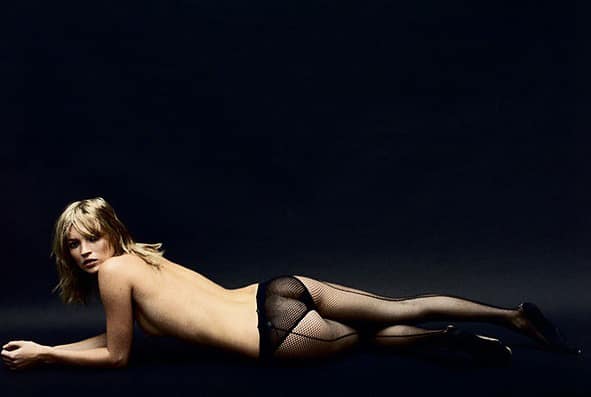
Must-Have Size Zero: The Sociocultural Perspective of Body Dissatisfaction
Second-year Psychology students participating in the University Honours College follow a mini-course on Blogging Science (within the Thematic Meetings course), in which they learn to communicate science to the general public, by means of informing, giving an opinion, and relating issues in science to issues in society. This year a selection of these written blog posts is published on Mindwise. This post is by Nina Brunk.
Most of us will every once in a while feel dissatisfied about what one is looking at in the mirror. It does not have to be the whole appearance, but most people have some problematic areas they would be happy to change about themselves. But be careful what you wish for: the dream of 90-60-90, six-pack and size zero can become seriously hazardous to your physical and mental health. Anorexia nervosa, bulimia and body dysmorphic disorder (i.e. being highly disturbed by perceived flaws in one’s appearance that might not be seen by others) are just some examples of how these seemingly harmless perceptions can severely affect people’s lives.
Looking at today’s lifestyle media, you will notice the high number of articles and posts that are concerned with the perfect body shape, both directly and indirectly. When watching television, there is a constant onslaught of many different advertisements for dietary programs, fitness centers and especially fashion trends starring overly attractive and overly thin models. Let alone the examples from lifestyle magazines like the high end fashion magazine ‘Vogue’ or ‘Men’s/Women’s Health’. On the one hand, such images may positively affect your motivation and inspire you to become fitter. On the other hand, they can also have a negative effect on people’s body satisfaction and give them unrealistic and unhealthy perceptions of their ideal body, especially for (young) girls.
Why are unrealistic body ideals harmful?
The negative effects of body ideals can be explained by the theories of social comparison and social learning. The theory of social comparison (Festinger, 1954) describes the process of comparing oneself with others to evaluate one’s own abilities and opinions. Hence, constantly encountering unrealistically attractive or thin body standards may lead to comparing oneself to those standards and use them as a reference point.
The tendency to accept societal standards of attractiveness as one’s own becomes especially harmful when these societal standards are unhealthy, for instance because the models who are idealized are underweight. This thin-ideal internalization (Harrison & Hefner, 2006) has profound effects on people’s health. For instance, media use was found to predict disordered eating, drive for thinness and body dissatisfaction in girls. But such images also affect males’ perceptions of the ideal female: males’ positive attitudes about the thinness of and dieting for women were strengthened after exposure to fitness and fashion magazines or shows (Harrison & Cantor, 1997). Hence, these images do not only have an influence on one’s own ideals but also on the societal view of what women (and men) should look like.
The theory of social learning (Bandura, 1977) states that we learn from important role models in our life. But there is also a downside to that: unrealistic role models, for instance super models like Kate Moss, may reinforce the above described effect. Their unrealistic “ideal” bodies are an important source of social comparison, especially for young girls, and might lead to being dissatisfied with the own body (Hargreaves & Tiggemann, 2004). Indeed, two pioneers in the study of disordered eating once stated that “The media have capitalized upon and promoted this image (of thinness) and through popular programming have portrayed the successful and beautiful protagonists as thin. Thinness has thus become associated with self-control and success.” (Garfinkel & Garner, 1982, p.145).
The promotion of the perfect appearance goes so far that computer programs like Photoshop are used to make super models seem to be thinner, better trained, as having perfect flawless skin, and bigger breasts. However, despite these notorious methods, striving for this popular portray is increasingly becoming accepted as the social norm: leading to an internalization of the thin-ideal.
What can society do against the thin body ideal?
One approach to counteract the media’s thin-body image is to inform people about the underweight status of models that are depicted in advertisements (Veldhuis, Konijn & Seidell, 2014). For this matter it is important that the labels that are given about body shape and weight only display objective information and no warning labels (i.e. labels about possible damaging effects of anorexia). Whereas information labels were found to lessen the negative effect on body satisfaction, warning labels have the same effect as providing no labels at all. One explanation for this might be reactance theory, which states that one will reject messages that are threatening to one’s behavioural freedom. However, there is still the issue of the application in the real world: Which fashion company would voluntarily accept and display such labels? Thus, the only solution that may dissolve this particular problem would be legal regulations.
Another approach has been introduced by the fashion industry itself: With the heightened attention to the thin-body ideals, some actors of the fashion world are trying to counteract thin-ideal internalization by using ‘normal-’ and ‘plus-sized’ mannequins (i.e. with a clothing size of 38/40 or M/L) for their stores, too. The Swedish store Åhléns, for example, was one of the first to introduce that their “customers, mainly women, all look different” (Hultgren, 2013). The store wants to encourage a positive body image. The question whether this strategy is really effective in preventing negative social comparison and the norming of a thin-body ideal is not answered, yet.
In conclusion, we have to realize that everyone is different and most people do not have the bodily structure that predestines a person to attain the perfect body shape (as it is promoted primarily by the fashion industry). Therefore, it should be the media’s duty to inform people about this problem as well as to counteract thin-body norms by providing more realistic alternatives. However, it still seems to be a long way to go until ‘normal-sized’ models will rule our social world.
References
Bandura, A. (1977). Social learning theory. Englewood Cliffs, NJ: Prentice Hall.
Festinger, L. (1954). A theory of social comparison processes. Human relations, 7(2), 117-140.
Garfinkel, P. E., & Garner, D. M. (1982). Anorexia nervosa: A multidimensional perspective. New
York: Brunner-Mazel.
Hargreaves, D. A., & Tiggemann, M. (2004). Idealized media images and adolescent body image: ‘Comparing’ boys and girls. Body Image, 1(4), 351-361.
Harrison, K., & Cantor, J. (1997). The relationship between media consumption and eating disorders. Journal Of Communication, 47(1), 40-67.
Harrison, K., & Hefner, V. (2006). Media Exposure, Current and Future Body Ideals, and Disordered Eating Among Preadolescent Girls: A Longitudinal Panel Study. Journal Of Youth And Adolescence, 35(2), 153-163.
Veldhuis, J., Konijn, E. A., & Seidell, J. C. (2014). Counteracting media’s thin-body ideal for adolescent girls: Informing is more effective than warning. Media Psychology, 17(2), 154-184.
Image note: Kate Moss



